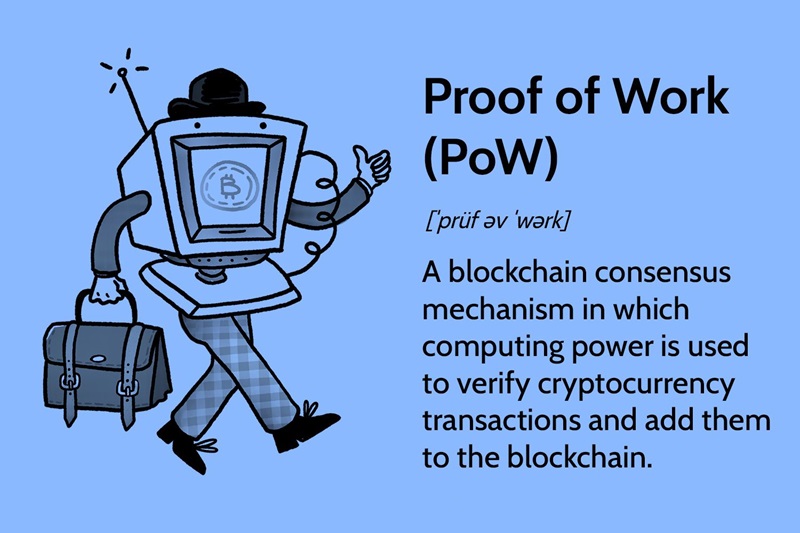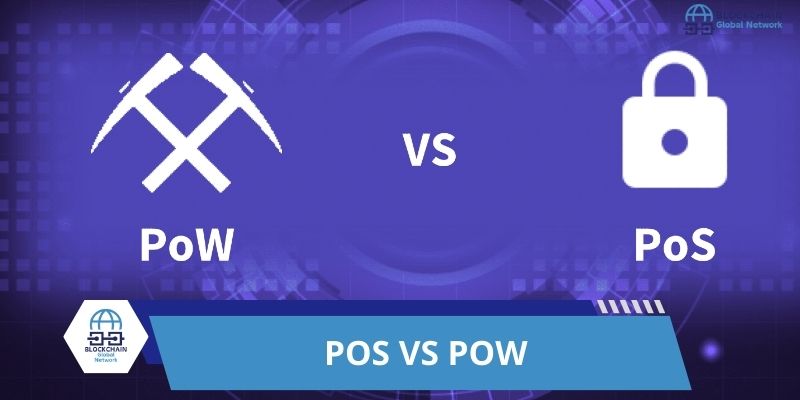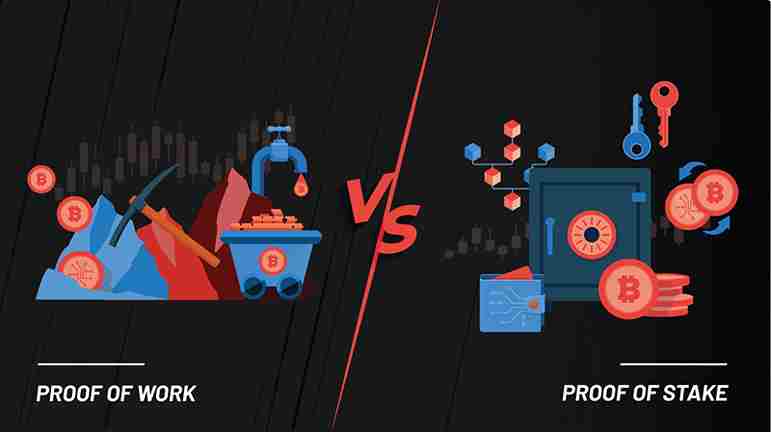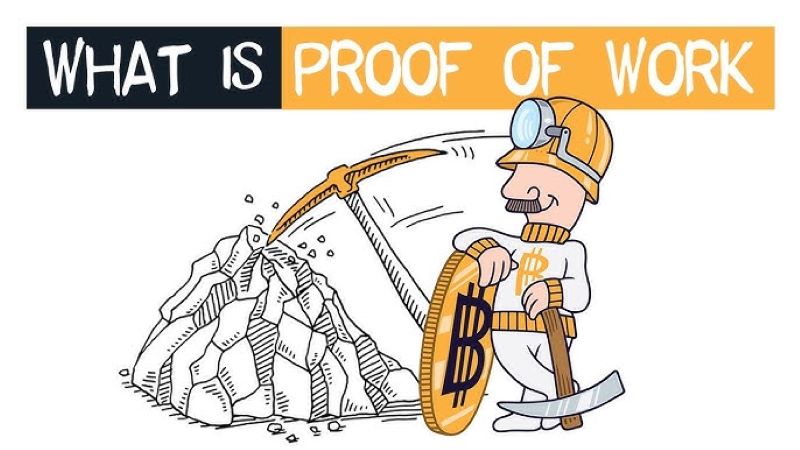Is your cryptocurrency truly secure? Dive into the Security of Proof of Work, where your peace of mind hinges on robust locks for your digital vault. Discover the cryptographic principles safeguarding your assets and the potential risks that could threaten them. Are you ready to protect your blockchain bounty?
Understanding PoW Security Features and Vulnerabilities
The Role of Cryptographic Principles in PoW Systems
PoW security features rely on math puzzles. Computers solve them to add new blocks to a blockchain. This is mining. The puzzles act as gates. They keep out hackers. Every miner races to find a solution called a nonce. The first one to solve it wins. They get to add a block and earn some coins. It keeps things fair and safe.
Cryptographic rules make it hard to cheat in PoW. They use hash functions. These turn data into unique codes. If data changes, so does the code. It’s easy to check if something’s altered. Hash rates matter too. They’re how fast a miner can solve the puzzles. More speed means more chances to add blocks and get coins.
Security in PoW comes from these puzzles. But it uses a lot of power. Mining rigs run all day and night. They need lots of electricity. Some people worry about this. They think about the planet and how much power we’re using.
Unpacking Proof of Work System Risks
Proof of Work isn’t perfect. It’s got risks. The big one is the 51% attack. This is when someone controls more than half the mining power. They can mess with the blockchain. Stop new transactions or redo old ones. They can double spend, which means spending the same coin twice.
The hash rate is key. High rates keep the network safe. More miners mean less risk of a single cheating miner. PoW systems reward miners. They give them coins for adding blocks. But if there’s just a few big miners, there’s risk. They might control too much.
We work hard to keep blockchains safe. Protection comes in layers. There are rules and truth checks. Miners validate transactions. Everyone in the network helps keep an eye out. This is decentralization. It means no one person or group has all the power.
Blockchain immutability is another security layer. Once something’s in the blockchain, it’s hard to change. This means you can trust the records. They’re really tough to fake or alter.
In the end, PoW systems have strengths and weaknesses. We trust them a lot. We use them every day for different virtual coins. But we’re also always trying to make them better. We look for risks and fix them. We tweak how the puzzles work. We ask how we can use less power. And we think about how to keep the blockchain fair for everyone. We aim for a system that’s tamper-resistant and lasts a long time. It’s our mission to keep your cryptocurrency safe.
Protecting Blockchain Integrity: Attack Prevention and Network Security
Strategies for 51% Attack Prevention and Detecting Double Spending
Keeping our blockchain safe is a must. We work hard to stop attacks before they start. A big threat is the 51% attack. This means someone gets more than half the network’s power. They could then harm the blockchain’s trust. But we can stop this. We watch the network and spread out the power. We ensure no one gets too much control. It’s like keeping the playground fair, so one kid can’t rule all the games.
Double spending is when someone spends the same digital money twice. It’s like trying to use a fake ticket to play a game again. We catch this fast! We check each transaction with eagle eyes. Every time money moves, the whole network nods yes. If a cheat pops up, we know right away. So your digital coins stay safe.
Counteracting Miner Collusion and Sybil Attacks
Next up, we keep miners from joining forces in a bad way. Some miners might try to team up. They could try to take over the network. We call this miner collusion. It’s like a secret club that makes its own rules. Not on our watch! We make rules to prevent this. We keep an eye on the miners and how they work. We use smart systems that can spot if miners are playing fair.
Sybil attacks are sneaky. Imagine someone making fake IDs to vote many times. We stop this by checking everyone’s ID at the door. If one player tries to act like many, we know. Our network has guards to block these fakes. This keeps our blockchain healthy and truthful.
Protecting our blockchain is no small thing. We go all in to keep it strong, open, and just for all. No bad players can mess with our digital world. We stand guard, day and night, for safety.
PoW vs PoS: Assessing Security Protocols and Energy Consumption
Comparing PoW and PoS Security Mechanisms
Let’s dive into the security of PoW and PoS. People often ask, “Which is safer: PoW or PoS?” Both have tough security, but they work differently. PoW, short for Proof of Work, makes miners solve puzzles to add new blocks to the chain. This means lots of power and work to keep the network safe.
In PoS, or Proof of Stake, coin owners create new blocks based on how many coins they have. This uses less energy but has other risks. Hackers could still try to own a lot of a coin to attack the network.
PoW is like a complex lock that needs a special key, while PoS is like a club where the biggest investors get the most say. PoW’s puzzles make attacks hard and costly. Still, if someone controls more than half the mining power, this could lead to a 51% attack, putting the network at risk.
Energy use is also a big talk point. PoW uses tons of power for mining. This isn’t great for our planet. We’re all about making tech safe and secure, but we can’t ignore its footprint. PoS steps up as a greener choice, slashing the energy bill big time.
To sum up, each method has its perks and issues. PoW is battle-tested, running networks like Bitcoin. PoS is newer on the block, powering chains like Ethereum 2.0. They both aim to protect your crypto, but the way they do it and their impact on the world are night and day.
The Ethics and Impact of Energy Use in Proof of Work
Now, let’s talk about energy use in PoW. It’s a hot subject and for good reason. Mining needs a lot of juice — we’re talking huge energy, like running a whole country. That’s a lot of carbon going into the air, and it has people worried. We all want to keep our digital cash safe, but not by hurting the earth.
Still, that energy does help keep the blockchain tough to crack. It’s a shield against fraud because messing with the blockchain means out-powering the entire network. That’s no easy feat. The more power we throw in, the harder it gets for bad actors to make a move.
But it’s not all doom and gloom. Some miners use renewable energy, turning to the sun and wind to power their work. It’s a step toward greener mining, and with more folks on board, PoW’s carbon footprint could chill out.
In a perfect world, we’d keep our crypto safe without our energy bills going through the roof. For now, we’re working on it, looking for that sweet spot where security and energy use meet.
So, when you pick your crypto, think about more than just the cash. Consider how it gets made and what it means for the world. It’s not just about keeping your money tight. It’s about keeping the planet right too.
The Future of PoW Systems: Advancements and Sustainability
Innovations in Hash Rate Significance and ASIC Resistance
Hash rate tells us how strong a blockchain is. More hash rate means more security. But it’s not all about power. It’s also about not letting one group call all the shots. If too few people have high hash rate machines, called ASICs, they control too much. That’s bad.
So, what do we do? We make ASICs less of a big deal. We change the rules of the game. We make it so anyone with a regular computer can join in. This way, everyone gets a say. It’s like making sure all voices matter, not just the loud ones.
Now let’s get real. No one can just snap their fingers and stop ASICs. They are here to stay. But smart folks are working on it. They are making new ways to mine that ASICs can’t touch. This means more people can mine. More miners means a stronger, fairer system. That’s good for you and me.
The Balance Between Proof of Work Redundancy and Efficiency
Mining to keep a blockchain safe may seem like a waste. Why do we need so much work for one little block? But that extra work keeps your crypto safe. It’s like having many locks on your door. It may seem too much, but it keeps thieves out.
Yet, too much work is not so great either. It costs a lot and uses too much power. Our world can’t handle that for long. We have to find the middle ground. Enough work to stay safe, but not so much we hurt our planet.
How do we do that? By being smart about how we mine. We use less power and still secure the chain. It’s tough, but we can do it. We have smart ways to use less energy already. And we’re always finding more.
So, we keep our crypto safe and our world clean. That’s our goal. It’s not easy, but nothing worth doing ever is. We roll up our sleeves and get to work. And in the end, we all win.
Remember, a safe blockchain is a team effort. We all play a part. By understanding how mining works and why it matters, you are part of the team. Keep learning and asking questions. That’s how we all stay sharp and keep our crypto safe.
In short, we keep making PoW better. We fight ASIC control and save power. We find that sweet spot – safe crypto and a healthy world. Together, we build the future of money. Security and sustainability can go hand in hand, and that’s the path we’re carving forward for Proof of Work systems.
We’ve explored Proof of Work (PoW) from every angle. We started by looking at how PoW keeps data safe using tough math. We saw that even with this math, there are risks like hacks and cheats. Then, we learned ways to stop attacks and keep the whole system strong. We compared PoW with Proof of Stake (PoS), checking which is safer and uses less power. Lastly, we talked about what PoW will be like later. We saw new ideas to make it work better without wasting as much.
Here’s what I think: PoW has its place in keeping our digital coins safe. Yet, it’s not perfect. We must keep making it better. Tech moves fast, and we must move with it. We need to find that sweet spot where it works well without costing the earth. That’s the way toward a future where our digital money is both safe and smart. Let’s make it happen.
Follow us at Blockchain Global Network!





RELATED POSTS
LooksRare NFT: A new generation NFT exchange
LooksRare NFT has quickly emerged...
Interoperable Blockchains: Unpacking Hidden Security Risks
Understanding the security risks in...
Gala Airdrop and 6 Tips to Maximize Gala Game Rewards
To maximize rewards from the...
Stable Coins Demystified: Your Essential Guide to Crypto Stability
What is a stablecoin? Explore...
Blockchain in Education: Unlocking Cost-Saving Strategies for Students and Institutions
Educational cost reduction in schools...
What Are Crypto Derivatives? Mystery of Digital Trading Instruments
Demystifying Crypto Derivatives: Understanding Basics,...
New Threats to Blockchain Security: Are Your Investments at Risk?
Protect Your Blockchain: New Threats...
Revolutionizing the Classroom: How Blockchain Will Transform Education
Enhance education with blockchain! Strengthen...
Trade Finance And Supply Chain Applications: Revolutionizing With Cutting-Edge Apps
Unlock Opportunities in Global Trade...
Challenges of Blockchain in Healthcare: Revolution or Roadblock?
Navigating data security and patient...
BlackRock and Citadel New Stock Exchange – What Awaits in the Future?
The BlackRock and Citadel New...
Mining Cryptocurrency how to? How to read trading charts cryptocurrency?
When venturing into the world...
Optimistic Airdrop – Detailed Guide on How to Acquire OP Tokens
This guide provides detailed steps...
Crypto Crashing and 3 important investment implications
Crypto Crashing has shaken the...
What Is A Sybil Attack? Sybil Attacks Uncovered
What is a Sybil attack?...
What is Data Availability Blockchain? Unraveling Decentralized Access Secrets
What is data availability blockchain?...